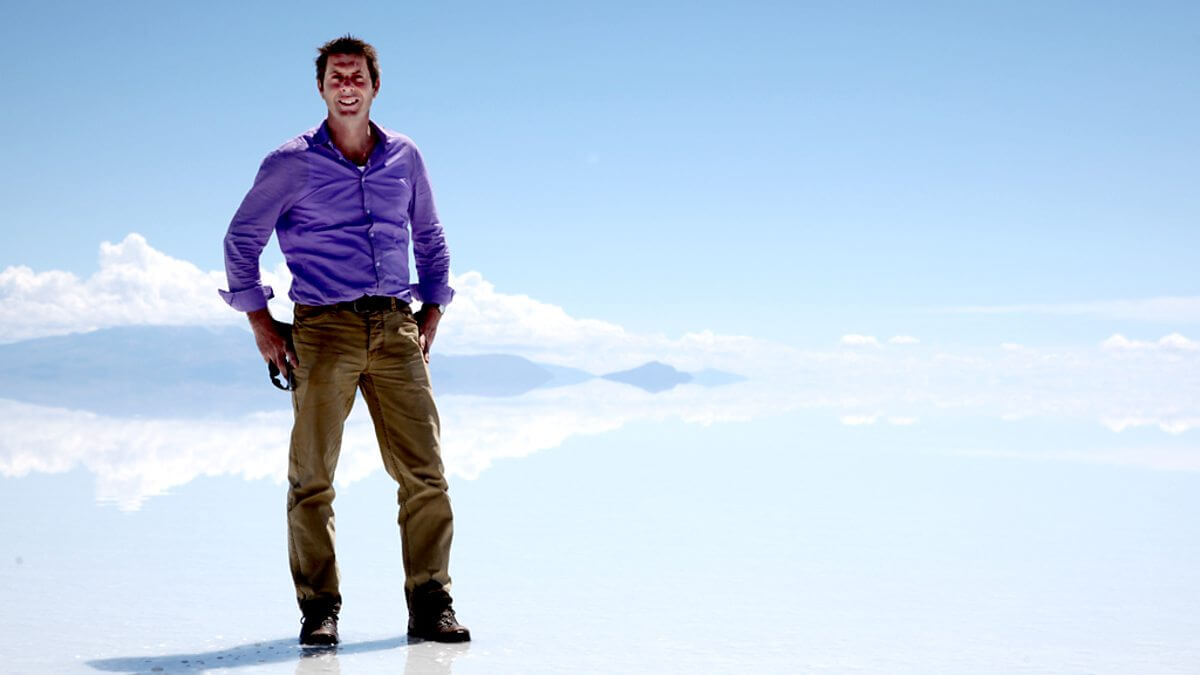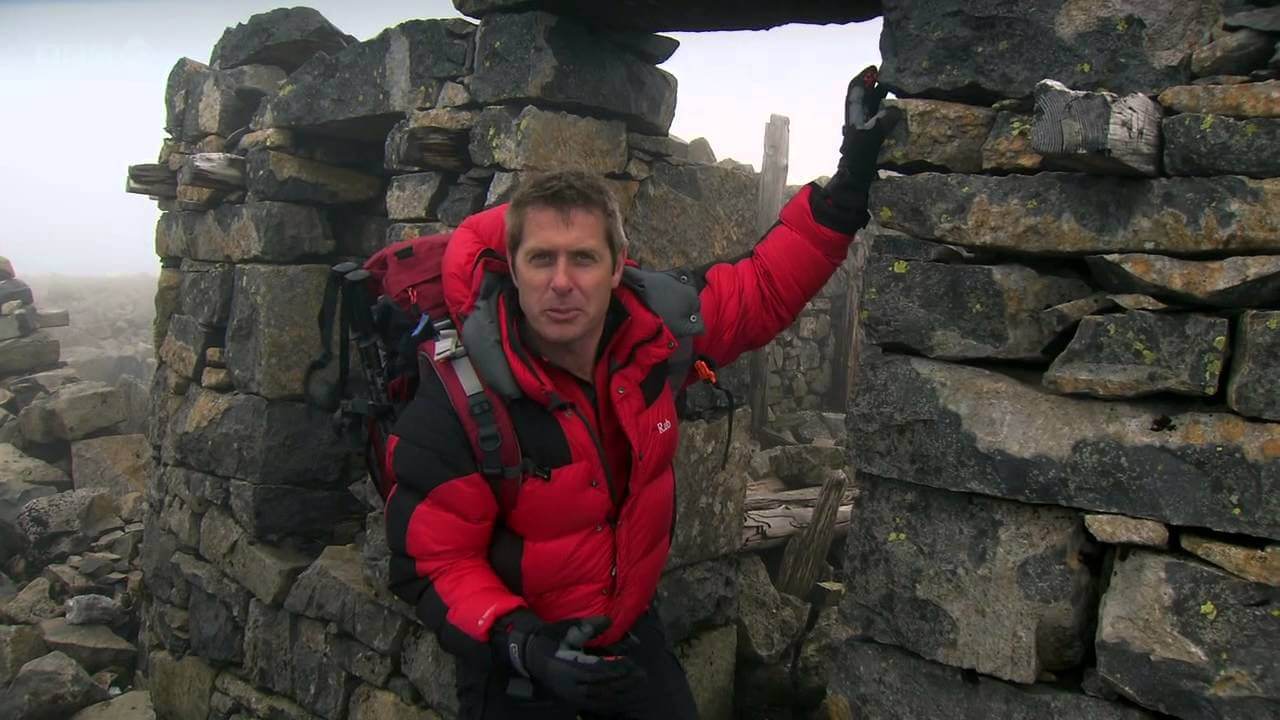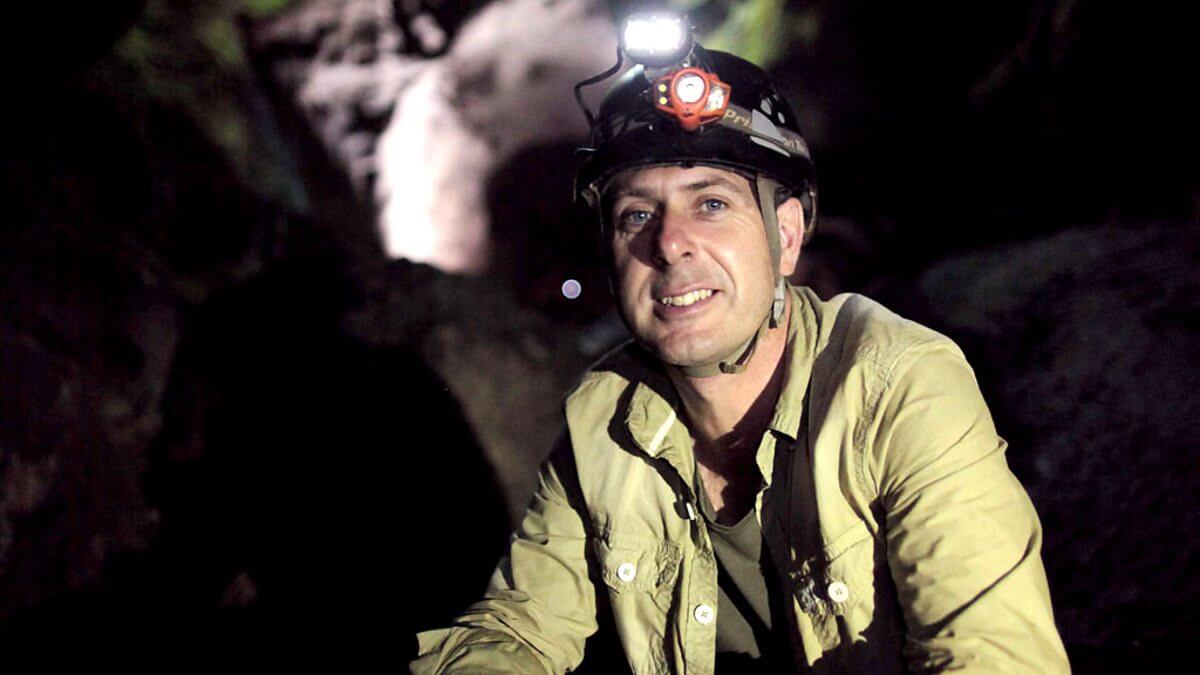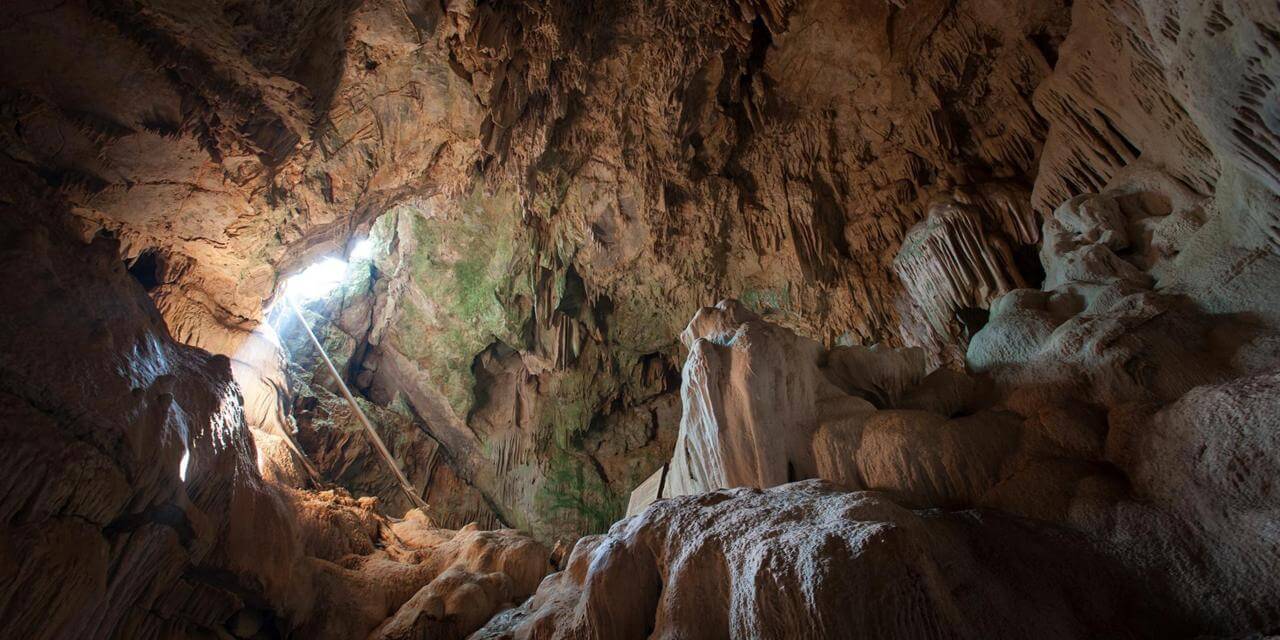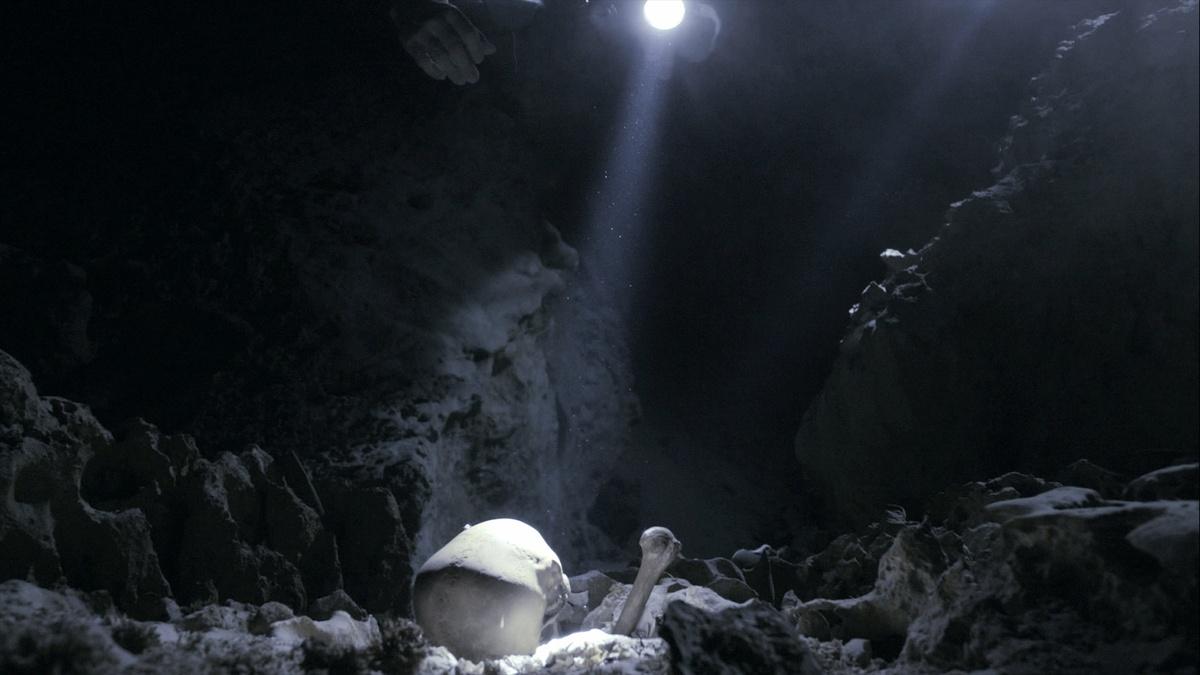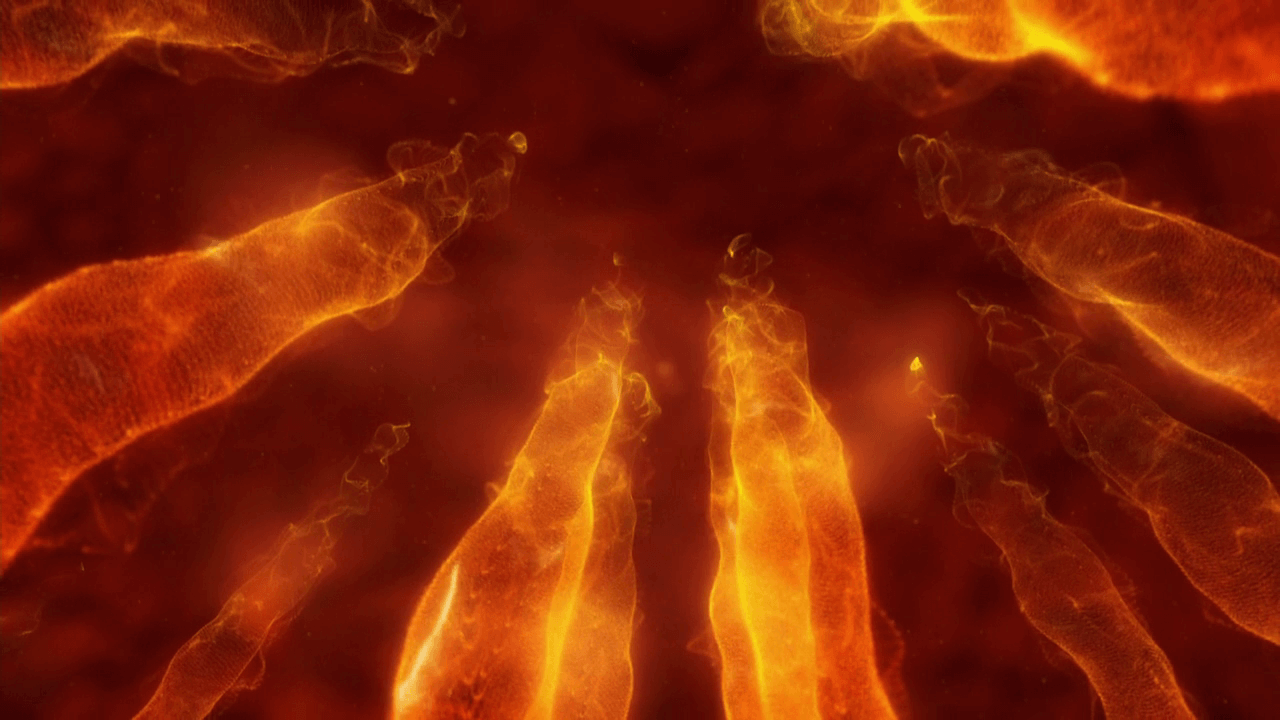description:
Professor Iain Stewart reveals how our iconic continents were created, and how their tumultuous past has shaped our life today.
episodes:
Geologist Prof Iain Stewart shows how the continent of Africa was formed from the wreckage of a long lost supercontinent. He discovers clues in its spectacular landmarks, mineral wealth and iconic wildlife,that help piece together the story of Africa’s formation. But he also shows how this deep history has left its mark on the modern-day Africa and the world.
Iain starts at Victoria Falls, with a truly spectacular leap into the water right on the lip of the 100m waterfall. Hidden within this vast cliff face is evidence that the Falls were created by vast volcanic eruptions 180 million years ago. These eruptions marked the moment when Africa was carved from the long-lost supercontinent of Pangaea and began its journey as a separate continent.
The creation of Africa had a surprising impact on evolution. Scrambling up the sides of the pyramids of Giza in Egypt, Iain finds small marine creatures that reveal that this part of Africa was once a shallow sea that formed when Africa was created. And within the arid Western Desert, he reveals 17m-long skeletons of early whales buried in the sand. These skeletons reveal how land-dwelling mammals were lured back into the shallow seas created by the birth of the African continent, leading to the evolution of whales.
Going back even further in time, Iain travels to the diamond mines of Sierra Leone. These vast gravel pits once fuelled the devastating civil war here. These diamonds reveal not just the very earliest origins of the land that makes up Africa today, but how the very first continents came into existence, billions of years ago.
The final chapter takes Iain to the Serengeti Plains, where he discovers how the spectacular wildebeest migration is fuelled by a process that will eventually lead to Africa’s destruction. Every year the wildebeest return to give birth in an area of unusually nutrient-rich grass. This grass grows on fertile volcanic soil and studying ash and lava from the nearby volcano reveals that beneath Africa there lies a vast mantle plume of molten rock. This volcanic upwelling is so strong that scientists predict it will one day tear the ancient continent of Africa in two.
Professor Iain Stewart uncovers the mysterious history of Australia, and shows how Australia’s journey as a continent has affected everything from Aboriginal history to modern-day mining, and even the evolution of Australia’s bizarre wildlife, like the koala.
Iain begins his search into Australia’s past on a wet winter’s night, searching for the elusive platypus – a strange creature that is half mammal and half reptile. 200 million years ago reptile-like mammals were found across much of the world because at this time Australia was just one part of a huge landmass called Gondwana, that dominated the southern hemisphere.
Piecing together evidence from fossils found in a sea cliff outside Sydney and rocks recovered from Captain Scott’s ill-fated expedition to the South Pole, Professor Stewart shows that Gondwana was covered by a vast forest of now extinct trees called glossopteris. This was the habitat of the ancestors of today’s platypus.
To discover the fate of Gondwana, Iain visits an unusual mining town called Coober Pedy where many of the buildings are underground in dug-out caves. The opals that are mined here enable him to recreate the breakup of Gondwana, and also show how Australia’s formation led to the creation of a vast underground aquifer. This source of hidden water sustained the Aboriginal people as they criss-crossed the otherwise arid Australian interior.
Iain travels to the stunning cliffs of the Australian Bight to show how Australia was once joined to Antarctica, and how their split led to the evolution of the biggest group of mammals on Earth – the filter feeding whales.
Australia’s journey away from Antarctica has also left its mark on one of its most iconic animals – the koala. Its big, round face and fluffy ears are a result of adaptations to the climate change that Australia has undergone on its northwards journey.
For the final chapter of Australia’s story, Iain travels to Indonesia to meet the Bajau people of the Banda Sea – sea gypsies who glean almost all they need to live from the rich colourful waters around them. Contained within these waters is evidence that shows Australia’s eventual fate. Over the next 50 million years, Australia will collide with Asia, its isolation will be over, and it will become forested and lush once again.
Professor Iain Stewart uncovers clues hidden within the New York skyline, the anatomy of American alligators and inside Bolivian silver mines, to reconstruct how North and South America were created. We call these two continents the New World, and in a geological sense they are indeed new worlds, torn from the heart of an ancient supercontinent – the Old World of Pangaea.
Iain starts in New York, where the layout of the city’s iconic skyscrapers provide a link to a long-lost world. Deep within their foundations is evidence that 300 million years ago New York was at the heart of a huge mountain range – part of the vast supercontinent called Pangaea.
Trekking into the Grand Canyon, Iain uncovers a layer of sandstone from Pangaean times that shows there was a vast desert either side of the mountains. Footprints in the rocks of the Grand Canyon reveal that there was only one type of animal that could thrive here – a newly evolved group called the reptiles. Iain gets up close and personal with the closest living relative of those early reptiles – the alligator.
Two hundred million years ago, Pangea underwent a violent transformation. North and South America were carved from Pangaea, and pushed westwards as separate island continents. To see how this westward movement shaped South America’s often bloody human history, Iain travels to Potosi in Bolivia. Cerro Rico is one of the most dangerous mines in human history. Iain goes to the heart of this extinct volcano to reveal the process that has shaped South America – subduction.
Subduction has also created the longest continual mountain range in the world – the Andes. At its heart lies the stunning ethereal landscape of the Salar de Uyuni, a vast salt flat where a lake has been uplifted thousands of metres above sea level. The lithium found here may be a new source of mineral wealth for Bolivia, for use in mobile phones.
The last chapter in the story of the Americas is told through that most typically Andean animal, the llama. But like much of South America’s wildlife it originated in North America, and only came south when the two island continents of North and South America joined three million years ago.
Since that momentous joining the story of the Americas has been a shared one. Together they continue their westward drift away from the Old World. However, on a cultural and economic level you could argue that the opposite is the case. In our new global economy the Americas are at the very heart of our connected world.
Two hundred million years ago the continent we know as Eurasia – “the vast swathe of land that extends from Europe in the West to Asia in the East” – didn’t exist.
To reveal Eurasia’s origins, Professor Iain Stewart climbs up to the “eternal flames” of Mount Chimera in southern Turkey, blazing natural gas that seeps out of the rock. Formed on the seafloor, it shows that where the south of Eurasia is today, there was once a 90-million-square-kilometre ocean known as the Tethys. It is the destruction of the Tethys Ocean that holds the key to Eurasia’s formation.
In the backwaters of Kerala in Southern India, he finds evidence of how that happened, in the most unlikely of places: the bones of the local fishermen’s prize catch. The freshwater fish called karimeen shares anatomical features with another group of fish that live in Madagascar, evidence that India and Madagascar were joined. India was once 4000 kilometres south of its current position on the other side of the Tethys.
As it moved north, the ocean in front of it closed. And as it collided with the rest of Eurasia the impact built the Himalayas, “the greatest mountain range on Earth”. Taking an ultralight aircraft up into the peaks, Professor Iain Stewart reveals how the mountains aren’t simply pieces of the land pushed upwards. In fact the rock that forms them was once the floor of the Tethys Ocean.
As Eurasia assembled, Arabia, Greece and Italy too moved north, completing the continent we know today and creating a mountain chain that spans the entire continent. And it was in the shadow of these mountains that the continent’s first civilisations rose.
But the formation of Eurasia is just the beginning of the story, because the process that formed it is still active today. Professor Stewart travels to the island of Stromboli, Italy’s most continually active volcano. The volcano’s spectacular eruptions show that the ocean floor is being pulled beneath Eurasia. It is this process that closed the Tethys, and today is closing the Mediterranean, revealing Eurasia’s future. 250 million years in the future all of the continents will collide together once more, forming a new Pangea, with Eurasia right at its heart.

